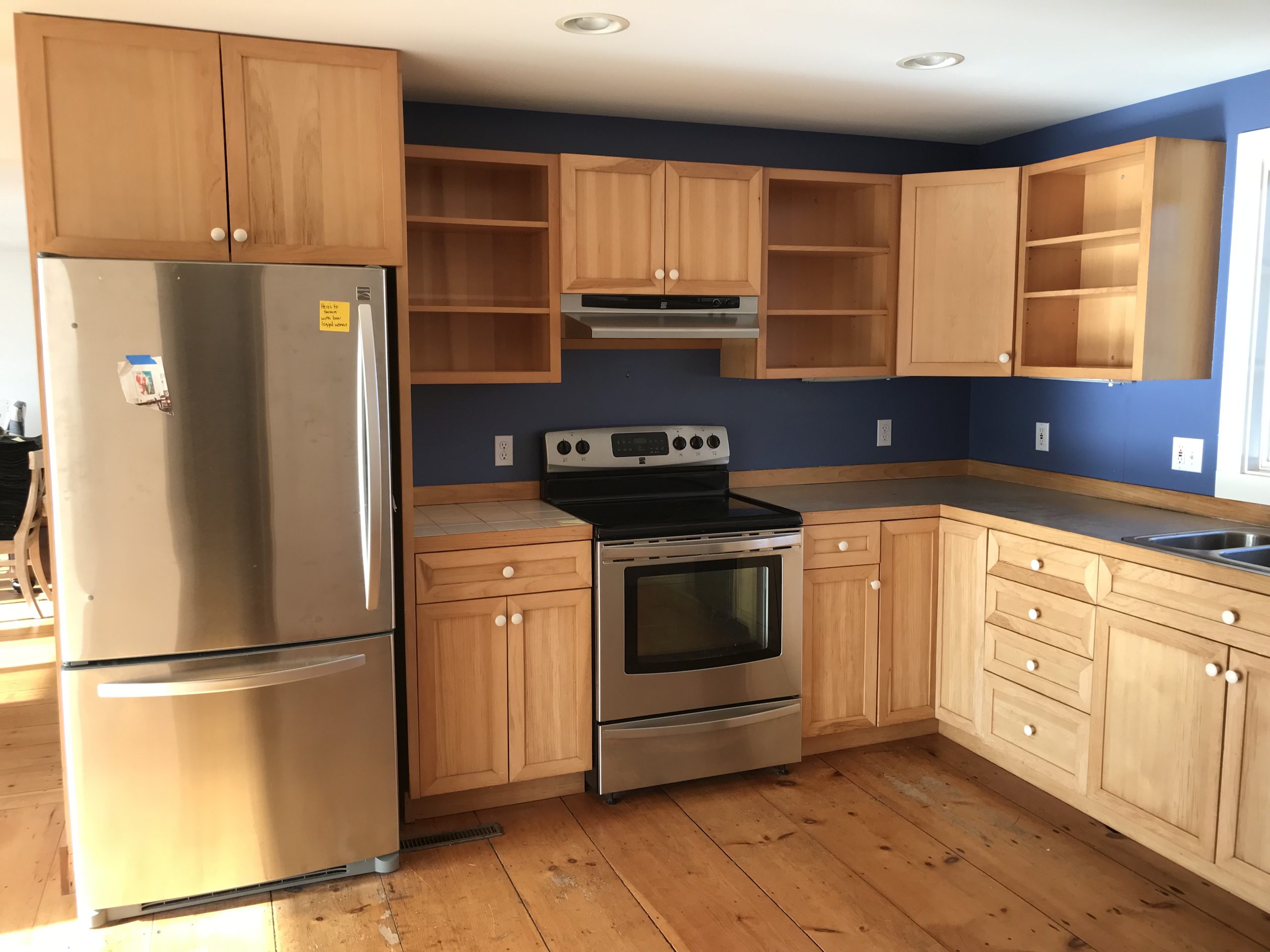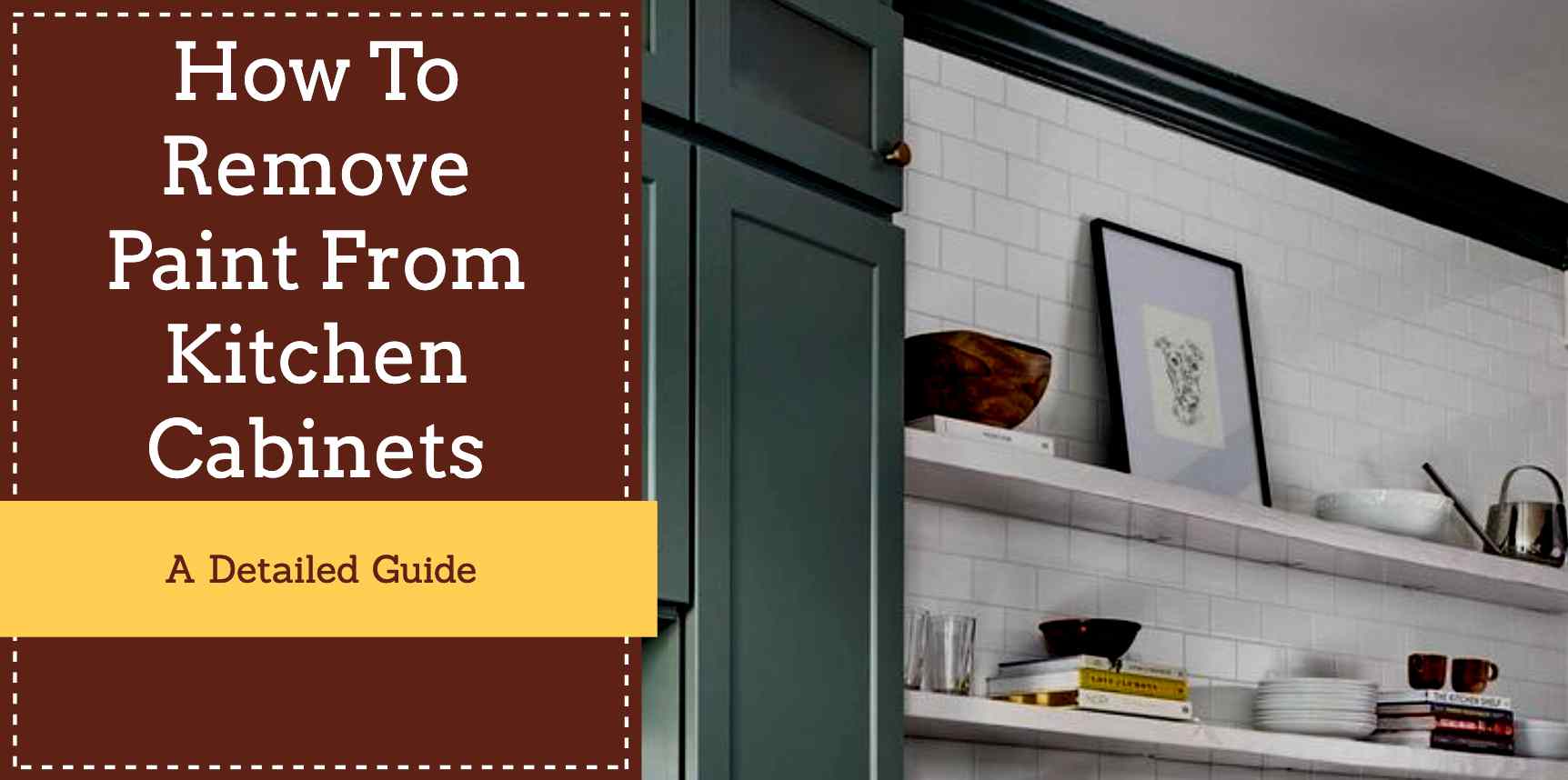Understanding Paint Stripping: Stripping Paint From Kitchen Cabinets

Stripping paint from kitchen cabinets is a common task for homeowners seeking to refresh their kitchen’s look. This process involves removing the existing paint layer to reveal the original surface or prepare it for a new coat. Understanding the types of paint, the factors influencing the choice of stripping method, and the associated risks is crucial for a successful and safe paint stripping project.
Types of Paint Used on Kitchen Cabinets
The type of paint used on kitchen cabinets significantly impacts the paint stripping process. Common types include:
- Oil-based paint: This type of paint is durable and provides a high-gloss finish, but it can be challenging to remove. Oil-based paints are often found on older cabinets.
- Latex paint: Latex paint is water-based and offers a more environmentally friendly option compared to oil-based paint. It is generally easier to remove than oil-based paint.
- Epoxy paint: Epoxy paint is highly durable and resistant to moisture, making it a popular choice for kitchen cabinets. However, it is also more difficult to remove than other types of paint.
- Lacquer paint: Lacquer paint dries quickly and offers a high-gloss finish. It is often used on kitchen cabinets due to its durability and resistance to scratches. However, lacquer paint can be challenging to strip.
Factors Influencing the Choice of Paint Stripping Method
The choice of paint stripping method depends on various factors, including:
- Paint type: Different paint types require different stripping methods. For example, oil-based paint may require a chemical stripper, while latex paint can be removed with a paint scraper.
- Cabinet material: The material of the cabinets influences the stripping method. For example, wood cabinets may be stripped with a chemical stripper, while laminate cabinets may require a different approach.
- Desired finish: The desired finish after stripping affects the chosen method. If a smooth, even surface is desired, a chemical stripper may be used. However, if the original wood grain is to be preserved, a more gentle method like sanding may be preferred.
Risks and Safety Precautions
Paint stripping involves chemicals that can be hazardous if not handled properly. It is essential to take necessary safety precautions:
- Proper ventilation: Always work in a well-ventilated area, as chemical strippers release harmful fumes.
- Protective gear: Wear appropriate protective gear, including gloves, eye protection, and a respirator, to avoid skin and respiratory irritation.
- Disposal of hazardous materials: Dispose of used chemical strippers and paint chips according to local regulations. Never pour them down the drain or into the garbage.
Always read and follow the manufacturer’s instructions for using chemical strippers and dispose of them properly.
Popular Paint Stripping Methods

Removing paint from kitchen cabinets can be a daunting task, but with the right approach, it can be accomplished successfully. Several methods are available, each with its own set of advantages and disadvantages. Understanding the nuances of each method will help you choose the best option for your project.
Chemical Strippers
Chemical strippers are a popular choice for removing paint from cabinets. These solutions contain powerful chemicals that break down the paint’s chemical bonds, making it easier to remove.
Chemical strippers are effective for removing multiple layers of paint, including latex, oil-based, and even epoxy paints. They are also relatively inexpensive and can be found at most hardware stores.
- Advantages:
- Highly effective in removing multiple layers of paint.
- Relatively inexpensive compared to other methods.
- Widely available at hardware stores.
- Disadvantages:
- Can be hazardous to your health if not used properly. Wear gloves, eye protection, and a respirator mask when using chemical strippers.
- Strong odor and fumes can be irritating and require adequate ventilation.
- May damage the underlying wood if left on for too long.
- Requires careful application and removal to avoid damaging the surrounding area.
Heat Guns
Heat guns are another popular option for removing paint from cabinets. They use hot air to soften the paint, making it easier to scrape off.
Heat guns are effective for removing latex and oil-based paints, but they may not be as effective for removing epoxy paints. They are also relatively inexpensive and can be found at most hardware stores.
- Advantages:
- Quick and efficient for removing paint from large areas.
- Environmentally friendly, as it doesn’t use harmful chemicals.
- Relatively inexpensive and readily available.
- Disadvantages:
- Can be dangerous if not used properly. The heat gun can burn you or ignite flammable materials.
- May not be effective for removing all types of paint, particularly epoxy paints.
- Requires careful use to avoid damaging the underlying wood.
Sanding
Sanding is a more traditional method for removing paint from cabinets. It involves using sandpaper or a sanding block to gradually wear away the paint.
Sanding is effective for removing all types of paint, but it can be a time-consuming process, especially for large areas. It is also a physically demanding task that can cause fatigue.
- Advantages:
- Effective for removing all types of paint.
- Relatively inexpensive, as sandpaper is readily available.
- Provides a smooth surface for refinishing.
- Disadvantages:
- Time-consuming and physically demanding.
- Can generate dust, requiring proper ventilation and protective measures.
- May not be suitable for delicate surfaces.
Mechanical Stripping
Mechanical stripping involves using a power tool, such as an electric sander or paint stripper, to remove the paint. This method is often used for large areas or for removing thick layers of paint.
Mechanical stripping is a fast and effective method for removing paint, but it can be expensive and may damage the underlying wood if not used properly.
- Advantages:
- Fast and efficient for removing paint from large areas.
- Can remove thick layers of paint effectively.
- Disadvantages:
- Can be expensive, as specialized tools are required.
- May damage the underlying wood if not used carefully.
- Can generate dust and noise, requiring proper safety measures.
Comparison of Paint Stripping Methods
| Method | Description | Pros | Cons | Typical Applications | Chemical Strippers | Solutions that chemically break down paint | Highly effective, inexpensive, widely available | Hazardous, strong odor, can damage wood | Removing multiple layers of paint, including latex, oil-based, and epoxy paints | Heat Guns | Use hot air to soften paint | Quick, efficient, environmentally friendly, inexpensive | Can be dangerous, may not remove all types of paint, requires careful use | Removing latex and oil-based paints from large areas | Sanding | Using sandpaper to gradually wear away paint | Effective for all types of paint, inexpensive, provides smooth surface | Time-consuming, physically demanding, generates dust | Removing paint from small areas, preparing surfaces for refinishing | Mechanical Stripping | Using power tools to remove paint | Fast, effective, removes thick layers | Expensive, can damage wood, generates dust and noise | Removing paint from large areas, removing thick layers of paint |
|---|
Practical Steps for Stripping Paint from Kitchen Cabinets

Now that you understand the basics of paint stripping and have chosen a method, it’s time to get your hands dirty. This section will provide a step-by-step guide for stripping paint from your kitchen cabinets, ensuring a smooth and successful process.
Preparing Your Cabinets
Before you start stripping, it’s crucial to prepare your cabinets properly. This step will help you avoid unnecessary complications and ensure a clean and effective paint removal.
- Clear the area: Remove all cabinet contents, hardware (knobs, handles, hinges), and accessories. This will give you ample space to work and prevent damage to these items.
- Protect your surroundings: Cover the surrounding areas with drop cloths or plastic sheeting to prevent paint stripper from damaging your floors, walls, or countertops.
- Clean the surfaces: Wipe down the cabinet surfaces with a damp cloth to remove dust, grease, or any other residue that could interfere with the paint stripping process.
- Tape off areas: If you have any areas you want to protect from the paint stripper, such as glass panels or decorative trim, use painter’s tape to mask them off.
Applying the Paint Stripper
Applying the paint stripper correctly is crucial for effective paint removal. Different strippers have different application methods and drying times, so make sure to follow the instructions on the product label.
- Wear protective gear: Always wear gloves, eye protection, and a respirator when working with paint strippers. These chemicals can be harmful to your skin, eyes, and respiratory system.
- Apply the stripper evenly: Use a brush, roller, or spray applicator to apply the stripper evenly to the painted surfaces. Be sure to saturate the paint thoroughly, but avoid over-applying.
- Let the stripper work: Allow the stripper to sit for the recommended time, as specified on the product label. This will give the chemicals enough time to soften the paint.
Removing the Paint
Once the stripper has had time to work, you can begin removing the paint. Depending on the stripper you used, you might be able to use a scraper, putty knife, or a combination of both.
- Scrape gently: Use a scraper or putty knife to gently remove the softened paint. Start at the edges and work your way towards the center. Be careful not to scratch or damage the underlying wood.
- Use a wire brush: For stubborn paint, you can use a wire brush to help loosen and remove the paint. Be careful not to apply too much pressure, as this could damage the wood.
- Repeat if necessary: If the paint doesn’t come off easily, you may need to reapply the stripper and repeat the process.
Cleaning and Neutralizing, Stripping paint from kitchen cabinets
After removing the paint, it’s essential to clean and neutralize the surfaces to ensure a safe and clean finish.
- Neutralize the stripper: Use a neutralizing solution, as recommended on the product label, to neutralize any remaining stripper on the surfaces. This will help prevent damage to the wood and ensure a safe finish.
- Clean the surfaces: Wipe down the surfaces with a damp cloth to remove any remaining stripper residue, paint, or debris. Allow the surfaces to dry completely before proceeding.
Dealing with Common Challenges
Stripping paint from kitchen cabinets can present some challenges. Here are some tips for dealing with common issues:
- Stubborn paint: For stubborn paint, you might need to use a stronger stripper or apply multiple coats. Be patient and persistent, and always follow the safety instructions on the product label.
- Uneven surfaces: If you have uneven surfaces, you might need to use a scraper with a flexible blade or a wire brush to reach all the nooks and crannies.
- Damage to the cabinet material: Be careful not to damage the cabinet material while stripping the paint. If you see any signs of damage, stop and reassess your approach.
The act of stripping paint from kitchen cabinets is a laborious and often frustrating endeavor, akin to peeling away layers of time itself. But imagine, instead of toiling with harsh chemicals, you simply replaced those tired doors with fresh, vibrant ones.
For inspiration and resources on all things kitchen cabinet doors ontario , a world of possibilities awaits. With new doors, the arduous task of paint removal becomes a distant memory, replaced by the joy of a revitalized kitchen.
The pungent aroma of stripper fills the air, a testament to the arduous task of stripping paint from your beloved kitchen cabinets. But fear not, weary soul, for a glimmer of hope shines through the haze. Consider the elegance of resin cabinet door inserts , a modern upgrade that breathes new life into tired cabinetry.
Perhaps, after all, the stripping process is merely a prelude to a stunning transformation.
